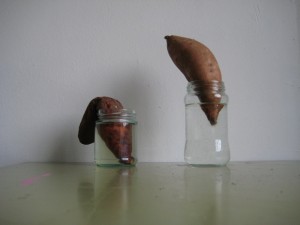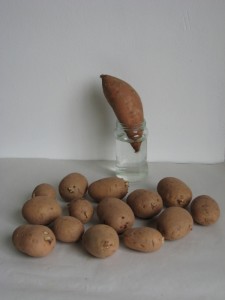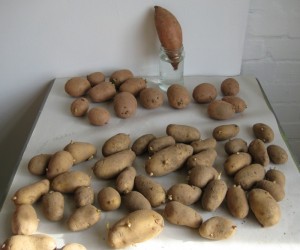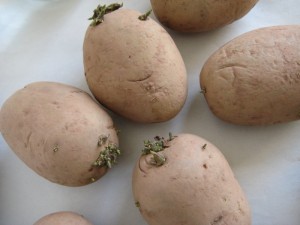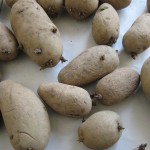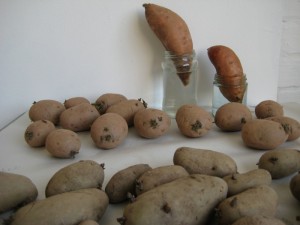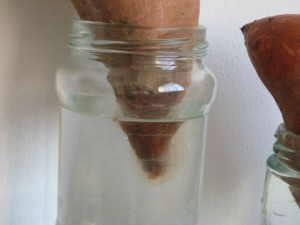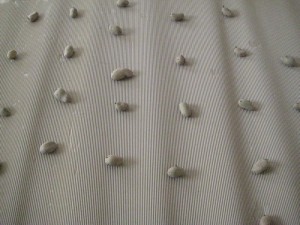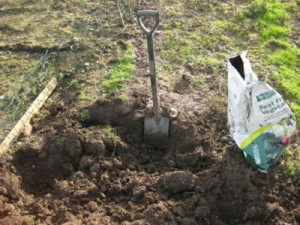A potato is a tuber. Deleuze and Guattari define tubers as rhizomes. The Potato, Solanum Tuberosum, (as opposed to the Sweet Potato) is part of the Nightshades family. The potato as a plant has a long history. It originates from Peru. Humans discovered the potato and begun to cultivate it at least 7,000 years ago. The Spanish Conquistadors were the first Europeans to come in contact with the potato in the 1530s after searching for gold and fighting the Inca’s in the Andes. (Ella Montt muses, invasion and conquest of a country is that not illegal? And the Inca’s would not even have had fictional or actual weapons of mass destruction!). The potato was brought to Europe by humans in 1570 (approximately). Spanish sailors on ships who ate potatoes did not suffer from scurvy. The nutritional content of this tuber is very high, unlike the plant leaves which are poisonous. Many humans in Europe, at first distrusted the plant, because they were unaware of the sickness the foliage could induce and also because the tubers were not attractive to the visual senses. The potato is said to have washed up on the shores of Ireland after a Spanish ship was wrecked. Gradually the plant became more accepted, and the human became very dependent on the tuber as a source of nutrition. More humans could be fed by growing potatoes than through other forms of agriculture. Potato blight, which is a type of fungus, destroyed crops between 1845-1852 in Ireland, the Scottish Highlands, and other parts of Northern Europe. The potato blight caused famine, death through malnutrition and emigration to escape these conditions. The blight eventually dissipated and the potato crops became healthy again.
The Sweet Potato tuber grows on a vine and the foliage (Ella Montt has read), is also edible. Sweet Potato is botanically known as Ipomoea Batatas and is related to the Morning Glory family. Some sweet potatoes can also be poisonous, but not the Batatas. Sweet Potatoes stem from the Southern regions of the New World, (continent of America). Columbus is said to have brought the Sweet Potato to the northern part of the New World, the Potato arrived almost one hundred years later. The Sweet Potato should not be confused with the tuber known as the Yam, Dioscorea Batatas, which is another type of vine altogether. The Yam is sweeter, has skin that resembles bark and can grow to almost two meters in length. Europe still has a very small Sweet Potato production, however production and consumption is prolific in many other parts of the world. The plant is not frost tolerant, it can be grown as a perennial under the right conditions, or failing that as an annual.
Ella Montt had tried to grow Sweet Potatoes on Allotment Plot at MERL in 2010, but the methodology that was used was faulty. On 9th February 2011, Ella Montt once again started her quest to grow a Sweet Potato. She assembled two Sweet Potatoes and water in clear glass jars and placed them in the studio with available light and heat. Sweet Potatoes can grow slips (white shoots) in this way that can then be used to grow the plant.
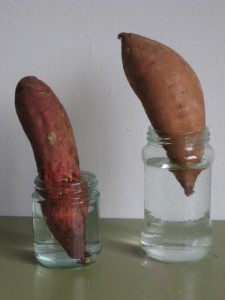 By the 18th February, one of the Sweet Potatoes had demised, but the other remained constant, yet without slips. The collapsed Sweet Potato had turned soft. It was removed and retured to the compost.
By the 18th February, one of the Sweet Potatoes had demised, but the other remained constant, yet without slips. The collapsed Sweet Potato had turned soft. It was removed and retured to the compost.
On the 22nd February a quantity of Potato Madeleine were placed on the table to chit next to the Sweet Potato. The Sweet Potato had started to produce a plume around the end submerged in water, but as yet no slips.
Two days later, on the 24th February, a larger quantity of Potato Charlotte were also placed on the table to chit. Bother Madeleine and Charlotte are early cropping potatoes. Early potatoes can be harvested in June, which avoids blight that could come later in the growing season. When the potatoes are placed in the light to chit they start to grow green shoots which promotes their growth. It is not essential to chit Main Crop potatoes, because they take longer to develop and will be dug up later in the growing season. Bob Flowerdew advises that you can plant all varieties of potatoes out as soon as the weeds start to grow, (Go Organic, 2002, p92), Ella Montt will be aiming to plant out both the Early and Main Crop potatoes in mid March, but it will depend on when the ground is ready at the Allotment Plots.
By the March 8th, the Early potatoes in the studio were sprouting small green chits. Ella Montt added a new Sweet Potato propped in a jar of water to the potato field in the hope of growing slips. The first surviving Sweet Potato continued to grow a plume in the water, but as yet no visible slips. Bob Flowerdew advises in grow your own, eat your own, (2008, p165) that Sweet Potatoes can be grown as a vertical vine. According to Bob, there is no need for the haulm (stalk or stem) to grow rooted across the soil, because it dissipates the energy of the plant. Ella Montt has observed different accounts on growing Sweet Potatoes, and knows that they can grow to cover a wide ground area. If the slips are formed and Sweet Potato plants are able to be grown, Ella Montt will experiment with both methods of cultivation.
Ella Montt removed the quantity of Potato Charlotte to a large sheet of corrugated cardboard that was spread across the studio floor. Each potato was placed approximately 30cms away from each potato as if the potatoes were planted in the position to grow on the potato field.
Ella Montt left the studio and went to dig at Allotment 326. The ground was in much need of prepartion for the future event of potato planting.
